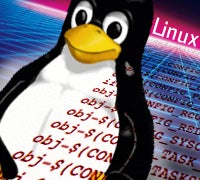 |
Not all Linux distributions are made with the same components, which can make it difficult for software developers to write applications for multiple Linux distributions. That’s where the Linux Standards Base (LSB) comes into play.
For years the LSB has not quite lived up to its full potential. That could all change with the upcoming LSB 4.0 release.
LSB 4.0, set for release by the end of this year, could be the catalyst that enables independent software vendors, or ISVs TERM
“One of the reasons why I don’t talk about the LSB as much anymore is I don’t want to exceed expectations for what it can deliver,” Jim Zemlin, executive director of the Linux Foundation, told InternetNews.com.
“It is critically important for Linux to have an easy way for software developers to write to distro ‘N,’ whether it’s Red Hat, Ubuntu or Novell,” he said. The reason you need that is because we don’t want what happened to Unix to happen to Linux in terms of fragmentation.”
The LSB defines a core set of APIs and libraries, so ISVs can develop and port applications that will work on LSB-certified Linux distributions. The Linux Foundation last updated the LSB in February of this year with the 3.2 release. Zemlin himself has been a champion of the LSB since his days at the Free Standards Group, where the LSB was one of his primary missions.
According to Zemlin, the standard will take a big step forward with LSB 4.0. His bravado is backed by the large effort the Linux Foundation has sponsored in developing the LSB 4.
“I’ve had for the past 18 months, 50 full-time engineers in Moscow working just on the LSB 4,” Zemlin said. “The benefit to the community in terms of the work that they are doing is going to be a lot more rigorous tests.”
As an example, Zemlin noted that they’ve written binary regression tests for all the C libraries for all the core packages that make up the LSB and Linux itself. As such a developer or ISV could easily determine if an application will run with the libraries that are part of the standard.
“The future of Linux that I would love to see is upstream projects adopting our tests,” Zemlin said. “Look at a project like Ruby and they have a model that when you write code you submit a test along with it. It makes the project high quality because of the rigorous tests.”
Zemlin noted that he can’t force anyone to adopt the tests that are being developed for LSB 4. That said, by providing the tests for free, he hopes that he will temp ISVs since the ultimate result will be greater application portability, which will benefit the ISVs themselves.
In addition to the LSB 4, the Linux Foundation is also working on a complementary effort called the Linux Developer Network platform, which will provide tools for writing Linux applications easier.
“The thing that I want to see from the LSB and the Linux Developer Network is a set of dead simple tools so that ISVs can take advantage of the standardization work we’ve done,” Zemlin said.
The LSB 4 standard itself will not mandated on all Linux distributions. Zemlin noted that certification against the LSB has always been and always will be voluntary.
“There is no way we could mandate a standard,” Zemlin said. “The standard is not punitive, and no one will go to jail if they don’t comply with the LSB.”
Zemlin argued that with LSB 4, he hopes that more ISVs will make use of the standard.
“There will be application vendors that will want to certify to LSB 4, as there will be broad enough coverage in the specification for them to build multidistribution applications,” he said. “Our tools are a quantum leap ahead of where we used to be.
Costs of certification
Though LSB 4 will serve to provide a baseline level of Linux standard certification, Zemlin agreed that a need for distribution level certification from Red Hat (NYSE: RHT), Novell (NASDAQ: NOVL) or Ubuntu will always be necessary.
“The bar for costs of certifying to Linux Foundation LSB is largely a development issue,” Zemlin explained. “When you certify to a Red Hat, Novell or Ubuntu, the bar is by and large a channel partnership and a support infrastructure, which is a higher cost than the development component.”
Zemlin noted that some people will always want to support one platform, be it Red Hat or otherwise, though he doesn’t expect that will be the majority once LSB 4 is released.
“Who is not going to want a portable app?” Zemlin asked rhetorically. “The problem is if you go to an ISV and tell them that they will have to do a tone of work to make their app portable, they won’t be interested. That’s not what we’re saying.”


